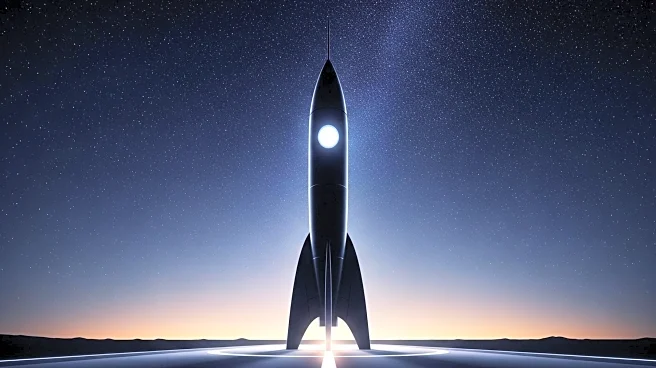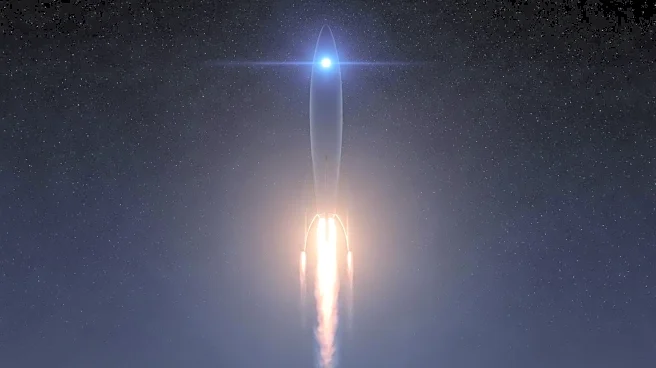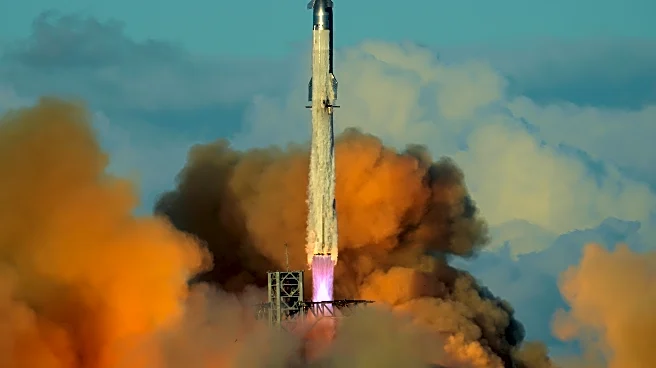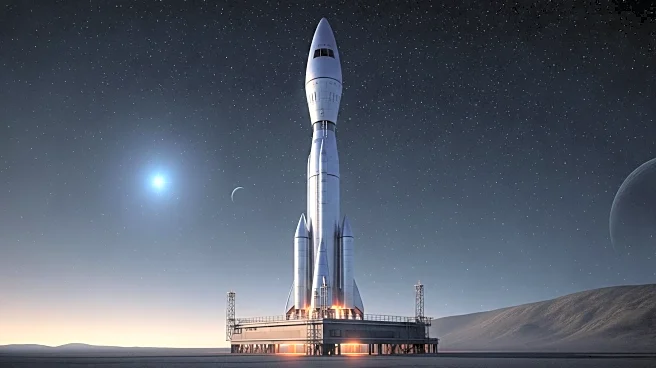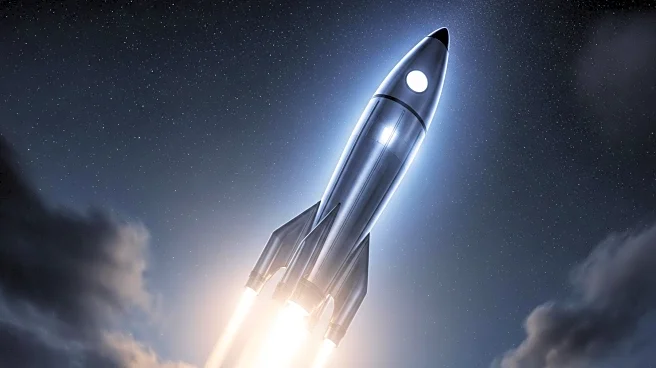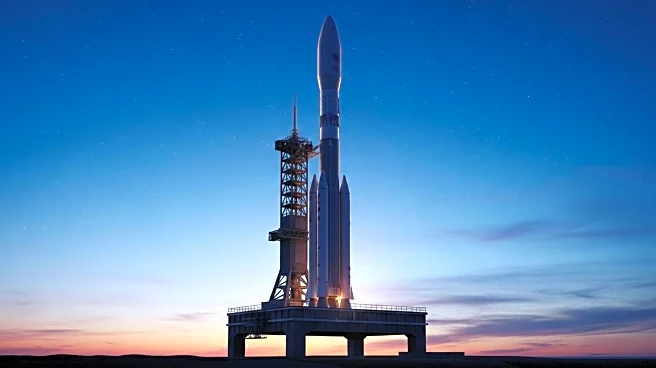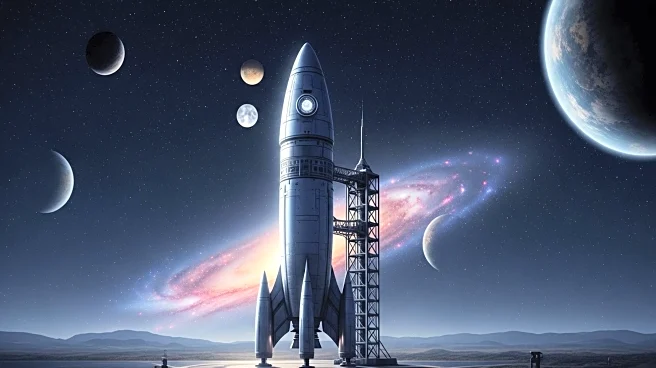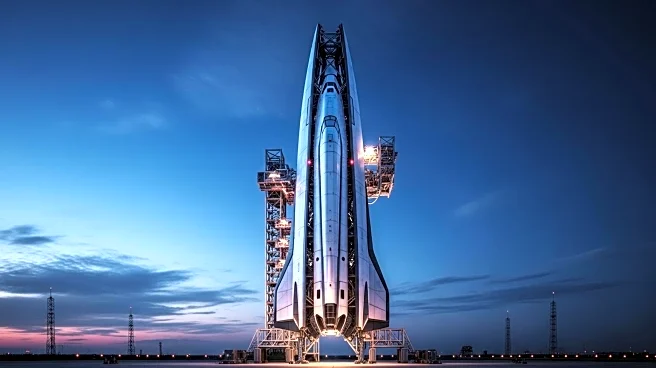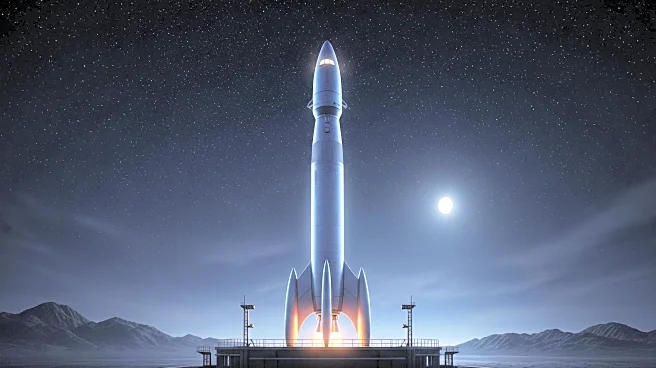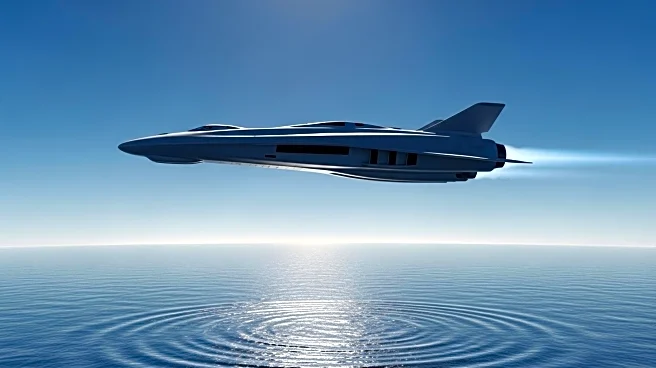What is the story about?
What's Happening?
SpaceX has completed the final test flight of its Starship V2 configuration, marking the transition to the next phase of its space program. The nearly 400-foot-tall rocket launched from Starbase, Texas, with the Super Heavy booster executing a new landing-burn profile before splashing down in the Gulf of Mexico. The Starship upper stage deployed eight mock Starlink satellite simulators and trialed a new dynamic banking maneuver. This test flight sets the stage for the upgraded V3 prototype, which will feature enhancements for in-orbit docking and propellant-transfer demonstrations, essential for missions to the Moon and Mars.
Why It's Important?
The transition to the Starship V3 prototype is crucial for SpaceX's long-term goals of achieving reusable space vehicles capable of reaching the Moon, Mars, and beyond. The V3 upgrades, including structural changes and enhancements to the Raptor engine, aim to increase lifting capacity and operational efficiency. This development is significant for NASA's Artemis campaign, which relies on SpaceX's Starship for its lunar missions. The advancements in Starship technology could also impact the deployment of higher-capacity Starlink satellites, enhancing global broadband connectivity.
What's Next?
SpaceX plans to conduct the first orbital flights with the V3 prototype, focusing on operational payload missions and propellant transfer capabilities. The company is upgrading launch facilities at Starbase and constructing dual launch pads in Florida to support these missions. Achieving these milestones is essential for SpaceX to meet its contractual obligations with NASA and to maintain its competitive edge in the space industry.
Beyond the Headlines
The evolution of SpaceX's Starship program highlights the growing importance of private companies in space exploration. This shift could lead to new partnerships between government agencies and private enterprises, fostering innovation and reducing costs. Additionally, the advancements in reusable rocket technology could have broader implications for environmental sustainability and resource management in space travel.
AI Generated Content
Do you find this article useful?


